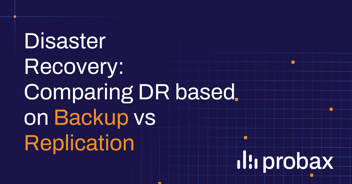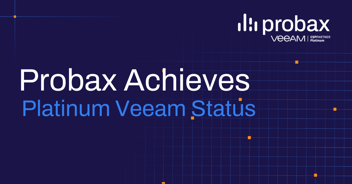Data protection based on backup alone is unable to keep pace with the demands of most end user organizations.
This means legacy backup on its own poses a threat to business continuity and can potentially lead to severe consequences for both business reputation and performance.
Here are six reasons why legacy backup by itself is not a viable disaster recovery solution.
1. Legacy backups only protect data at a point in time
The principal reason why backup alone isn’t sufficient is that backing up copies of data only protects the data itself at a specific point in time and is better suited for longer-term data retention.
Data replication is focused on uninterrupted operation of mission-critical and customer facing applications. This is particularly important when comparing disaster recovery based on backups versus replication.
2. Legacy backups have lengthy RPOs and RTOs
If backup copies are only made weekly or daily, the Recovery Point Objectives (RPOs) are relatively high. This means that for an outage, any updated or additional data produced since the last backup was taken, will be lost. Additionally, since the backups are just copies of data, the system recovery is manual, meaning the Recovery Time Objectives (RTOs) are much higher.
The higher RPOs and RTOs alone make backup an inadequate disaster recovery solution.
3. Legacy backup failbacks can mean exposure to unacceptable downtime
It’s all too common for MSPs and some DRaaS vendors to focus on the RTO/RPO of the failover only.
Failing back and restoring full backups during incidents can be extremely time-consuming depending on the size of the environment, the backup storage medium used and the process of manual restoration of data and services to bring the production environment back online.
The consequence of neglecting the RTO/RPO of failback is unacceptable as the impact can result in significant downtime and revenue loss
4. Legacy backups have limited snapshots or recovery points
Traditional backups can take a long time to create and save an entire snapshot or state of data. Combine this with the impact of shorter backup intervals on RPO, and you will find only a limited granularity of backup snapshots to select from when initiating recovery.
This can be dangerous if the data at the time of the latest backup was corrupted and you need to restore to a different earlier time—potentially one outside your RPO window.
5. Legacy backups have poor recovery automation
Starting the process of rebuilding from a backup can be automated, but there is a limit to how much efficiency you can derive from it due to the sheer time it takes to carry out a full backup recovery.
If you want a more automated recovery system that can help you get your systems back up and running, you need a disaster recovery solution that offer quick and seamless failover and failback.
6. Legacy backups have poor data retention between failover and failback
If an outage were to occur, failing back to a backup will take your environment back to the point of that backup. Any data generated by users since the last backup was taken will be lost.
A disaster recovery solution will ensure all user data is protected no matter when you failover or failback.
Is backup alone a viable disaster recovery method?
No, relying on backup alone is not true disaster recovery. It's just one element of a complex disaster recovery process. Data backup serves as a copy of a company's data, and it's meant to protect you against the loss of data within your everyday systems.
Disaster Recovery as a Service (DRaaS) is a true disaster recovery solution that minimizes downtime.
Why is it important to consider whether backup is a viable disaster recovery method?
Recovering quickly after an outage or disaster occurs is essential to minimize downtime and revenue loss.
Every organization generates large quantities of critical data.The longer the business is down, the more revenue the company will lose. Some businesses have to wait for unacceptable lengths of time before operating systems or IT infrastructure are back up and running.
If your clients are hit by a disaster and fail to recover in time, the chances are high that your MSP may also lose your clients to other providers. This condition leads to long-term costs of finding new business. By offering disaster recovery solutions such as DRaaS, you can keep your clients happy and reduce the need for long-term customer acquisition.
You need DRaaS in your MSP toolkit
Traditional backup only protects a segment of data. That's why our practical and free white paper Most MSPs Have Inadequate Disaster Recovery Solutions outlines everything your MSP needs to know about the importance of DRaaS.
Simply click below to download your copy today!






